Contemporary textile artist Ptolemy Mann unravels the time intensive method of creating her intricate woven works, seeped in colour from within, as she juggles many roles as a painter, journalist and teacher.
My life is my art. I have been working so long and so hard at it that life and art have merged. I am never happier than when I am in my studio. Still have a lifetime of ideas to work through.
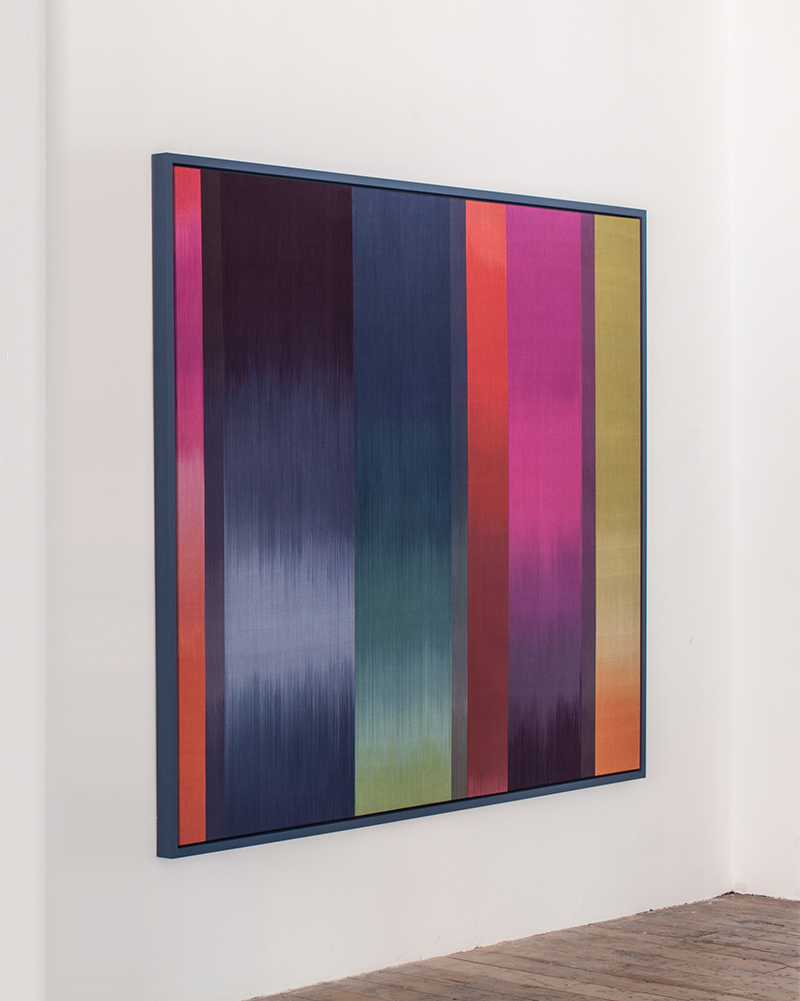
Winter Solstice. Contemporary textile artist Ptolemy Mann. 2018. Textile Facade
How did your tryst with textile art begin?
I knew from a very young age that I wanted to be an artist. Here in the United Kingdom we specialise very early. Immediately after leaving school we decide specifically what subject we want to study further. I always knew it would be art and I, therefore, went to art school and a year later enrolled into a bachelor’s degree in textile design for three years at Central Saint Martins.
I was here where I was taught extensively about colour theory through the ideas of the Bauhaus movement in Germany. My deep love and understanding of the importance of colour has influenced my work ever since. I soon specialised in textile weaving as an art form and continued on to a Master of Arts degree at The Royal College of Art (RCA) in London.
Tell us about the early days.
My first wall-based artworks were created here around 1996. What I love most about making textile artworks is that I am using an ancient and respected craft, traditional techniques of dyeing thread and weaving cloth to make modern artworks. I liked the idea of having a real sense of skill and craftsmanship as the backbone of my practice. Since 1997 I have been working in my studio making artworks non-stop. It’s become an obsession. I’ve been lucky enough to work continuously as an artist in a range of challenging ways. I began to use weaving as a metaphor for a way of working with colour and architecture.
There was a period of time roughly between 2009 and 2017 when I explored commercial textile design along with my art practice. Out of this experience I established my rug design business which still continues today. More recently, I have focused more fully on weaving within a fine art context.
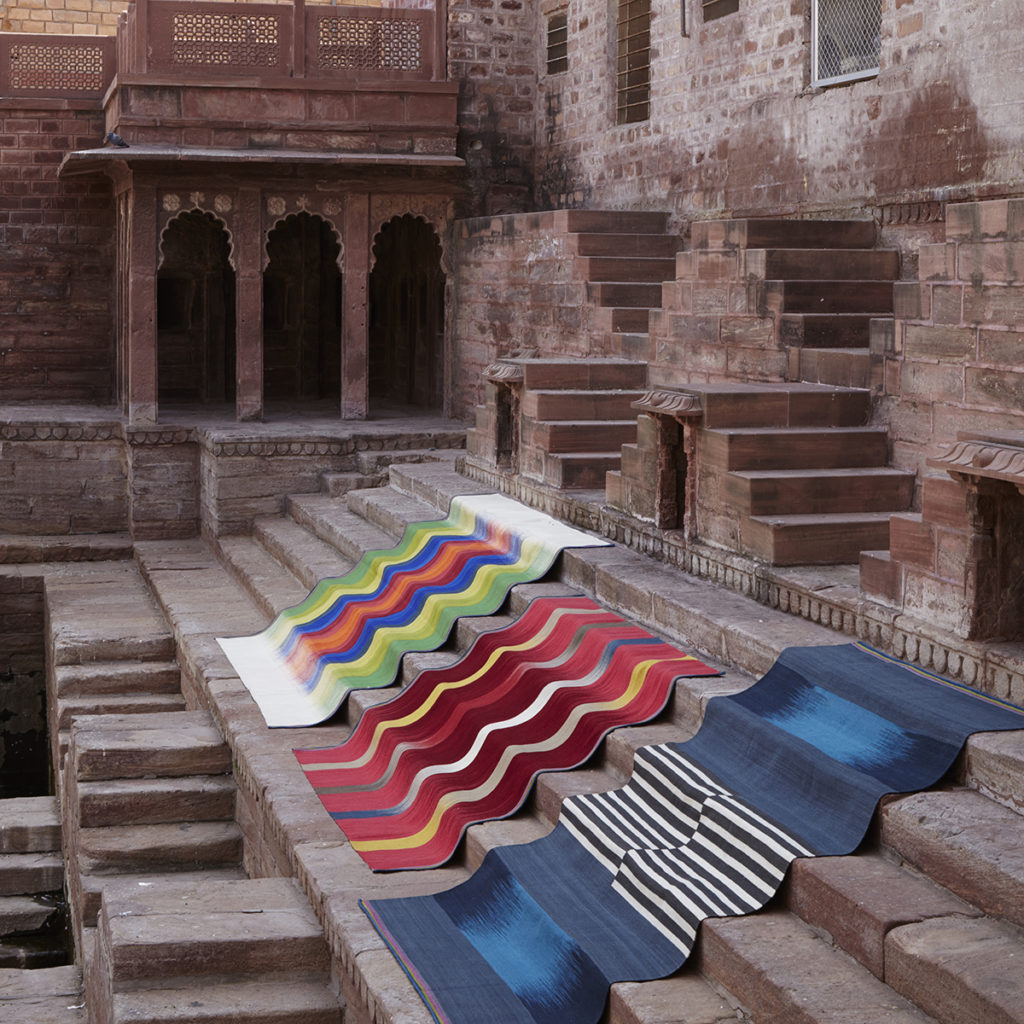
Contemporary textile artist Ptolemy Mann Rugs in Jodhpur
Textile design, journalism, teaching, and art. How did you move from one to the next?
The reality of being a professional artist is that you have to do many things to keep the creative practice viable. Although the backbone of my work is based around hand-dyed and woven, non-functional artworks, which will always be at the heart of everything I do, I’ve been lucky enough to have the opportunity to work in many other ways.
The nature of being an artist is that you work alone. However, I have found that working collaboratively and with other disciplines acts as a brilliant inspiration. I was asked to design rugs and other commercial textiles just over 10 years ago by various companies and I thought it would be interesting to explore this avenue.
I have always loved writing and found journalism highly rewarding. Teaching is never something I have done full time but I have become a good speaker. I have found that talking articulately about one’s work is crucial and the best way to get better at it is to do it as often as possible. I’ve never been a technical weave teacher, but I really enjoy lecturing and this has often allowed me to travel as well. I think anyone who is truly interested in the world and creativity moves between materials and techniques and disciplines, as and when the opportunity arises.
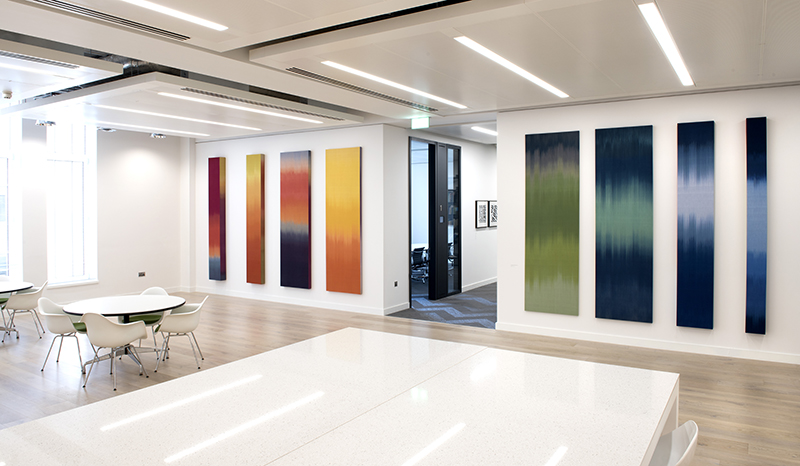
Stanhope Commission. Contemporary textile artist Ptolemy Mann. London. 2016.
When and where was your first show? Tell us about the evolution of your practice over the years. Elaborate on the learning curve and the challenges you faced.
My first commission was in 1996 and I won a competition while I was still an MA student at the RCA. It was for a big firm of accountants called KPMG and each woven panel reflected a different country they worked with. It was the first time I had a deadline and was paid for my work, which was a brilliant introduction to the “real” world of making a living through art and I loved the process.
My degree show at the RCA followed a year later and I made a monumental installation of ambitious work. I still feel proud of it even today. I was lucky in that I found my genre very quickly when I was still very young and I’ve never looked back or really strayed from those early ideas. It’s as if the work emerged almost fully formed from day one and I’ve been able to spend the last 20 years fine tuning the skill and aesthetic.
Which was the most memorable moment?
Working to commission has always been a fruitful way of working for me and it has allowed me to create very large work for specific spaces and in collaboration with architects – those first 10 years were not only a massive learning curve but also very creative. I think I’m always learning… it never stops!
A real highlight happened recently when I installed a commission I’ve been working on since the beginning of this year for the Tate Modern Gallery in London. There was a very brilliant exhibition at the Tate last year of the Bauhaus weaver Anni Albers and it has triggered an enormous interest in woven textiles within an art context. It’s been a very exciting year within this field and being asked to make a site-specific artwork for the restaurant on the ninth floor of the Blavatnik building has been a real privilege.
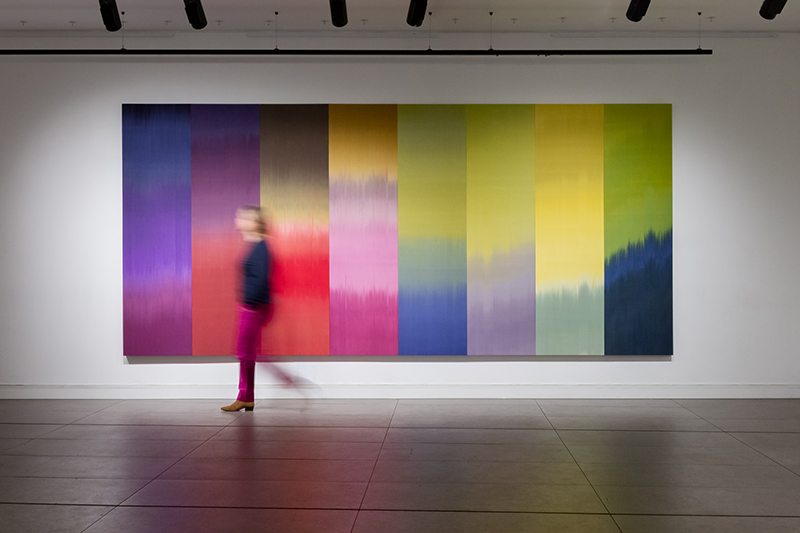
Contemporary textile artist Ptolemy Mann – ALBEDO. 2019. Photo by Ruth Ward.
What inspires you? Take us through your process and your frames of reference.
This is an impossible question to answer. I’m inspired by so many things that have accumulated over so many years, but the starting point has always been abstract expressionism – painters such as Mark Rothko, Barnett Newman, Agnes Martin, Lee Krasner. Josef Albers and Anni Albers, all the Bauhaus colourists like Klee and Itten.
Architecture has been a constant source of ideas: Barragan, Louis Kahn, Legoretta. More recently I’ve been looking at James Turrell, Frank Bowling and Lenore Tawney. Colour is so central to my work that inspiration can come from so many places. Donald Judd is a real favourite of mine. I have a massive collection of textiles from Japan, Africa and China. For me the ancient always runs into the modern. Because I have a rug business I go to India a lot and this has also become a massive source of ideas for me. India is such an incredible place for colour.
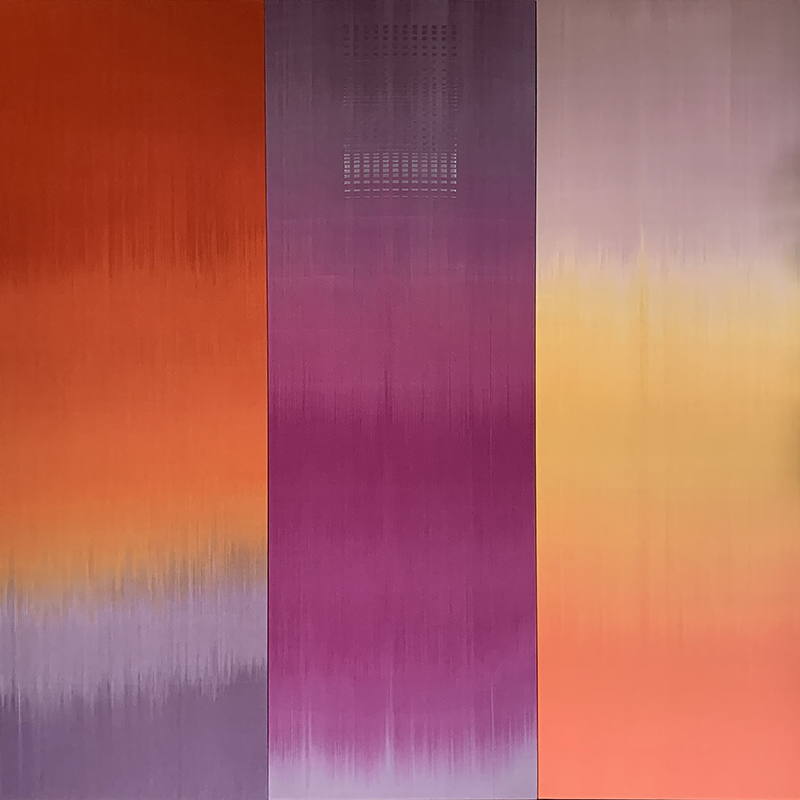
Contemporary textile artist Ptolemy Mann. Tate Commission – Circadian Rhythm. 2019. Daylight.
What is the primary role of an artist? How do you describe yourself in the context of challenging people’s perspectives via your work and art?
I actually believe in making beauty. I have a sense of optimism and my work reveals that. People have a massive assumption about woven textiles and they assume my work will be unrefined and they are almost always surprised by the finesse and delicacy of my hand woven artworks. They look like paintings and then become something else on closer inspection. I love being able to surprise people.
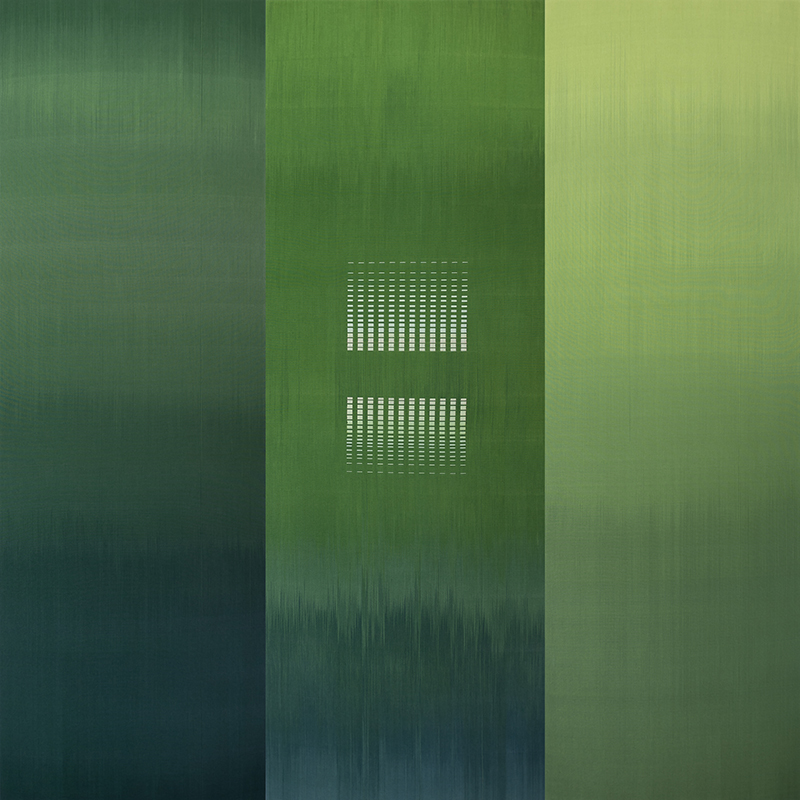
Contemporary textile artist Ptolemy Mann. Tate Commission. 2019. Dawn.
How do you balance art and life?
My life is my art. I have been working so long and so hard at it that life and art have merged. Am never happier than when I’m in my studio. I still have a lifetime of ideas to work through.
How do you deal with the conceptual difficulty and uncertainty of creating a new show?
I’m lucky in that I never feel that uncertain about my work. I am very clear about what I’m doing now and next. Of course, I can never predict how others will react but I am pretty clear in my own mind about what I want to communicate through a show. I find it exciting and invigorating rather than difficult. It’s a lot of hard work and is time consuming rather than difficult.
How does your audience interact and react to the work?
On the whole extremely well! People respond very well to colour in particular and they admire the skill involved. I have found over the years that even if they don’t “like” the work they can respect the craftsmanship and work involved in making it. My work is emotional and tends to trigger a reaction – usually positive – especially when it’s large scale. When colourfields become larger than human scale, something really interesting happens.

Textile Facade – Grey Violet Green. Contemporary textile artist Ptolemy Mann. 126 x 126cm. Side Detail. 2017.
What are you looking for when you look at other artists’ work? Any particular show or performance or experience that has shaped your creative process? Who are the masters you love? Whose journey appears fascinating to you?
I have touched on this above. I make a point of looking at a lot of work by other artists and living near London gives me access to an extraordinary selection of galleries. A recent show of the painter Frank Bowling totally blew my mind – the strength of colour was mesmerizing. I was unusually speechless after viewing his work. The whole Bauhaus movement has also been a constant reference point for me and celebrating 100 years of Bauhaus this year has been a joy.
What trends have you observed in the art world? How do you foresee it evolving?
We are having a red-hot-textile-moment right now. Frieze London had a special curated section this year called WOVEN. Textile art and especially weaving is finally taking center stage in the art world and it’s an extremely exciting time to be working with this medium.
What is the one thing you wish people asked you but never do?
Not sure how to answer that but I know the one question people always ask and I wish they didn’t: “How long did it take you to weave that?”
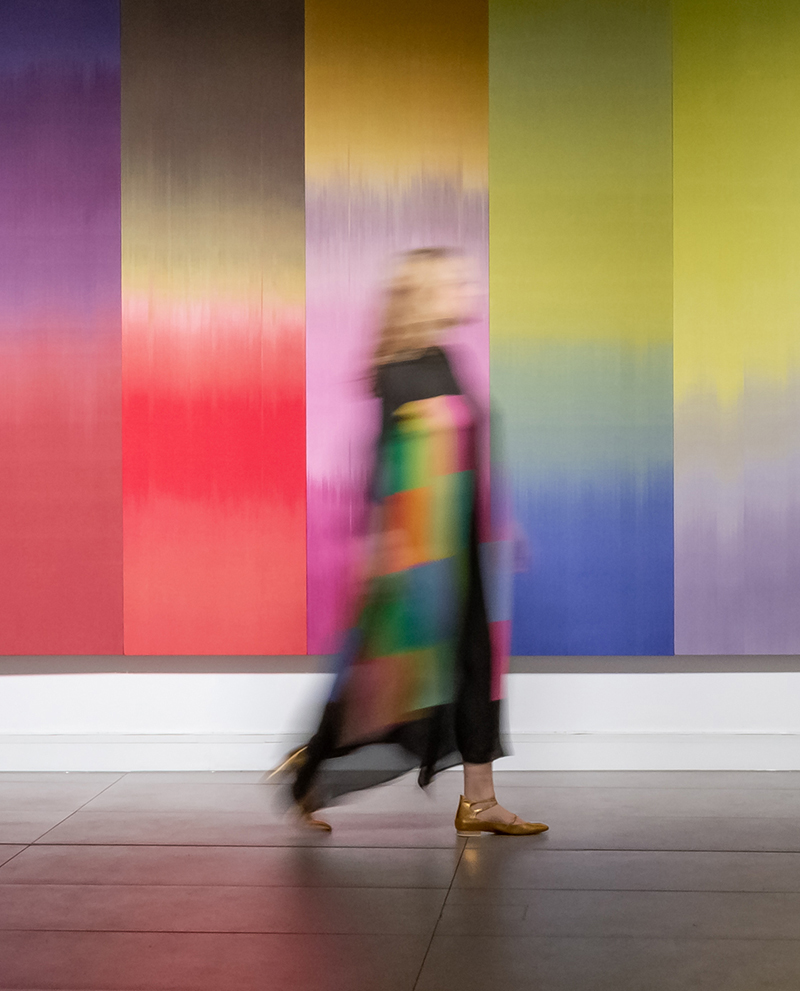
Contemporary textile artist Ptolemy Mann – ALBEDO. 2019. Photo by Ruth Ward.
What is one imperative piece of advice you would give to someone who is just starting out?
Learn a skill – it almost doesn’t matter what it is. Just learn one skill really well. From that you will learn a methodology and a way of thinking.
How does your interaction with a curator, client or gallery evolve from the (brief) initial interface, to the working-involvement-relationship? How do you feel about commissions?
As I say above I’ve done a LOT of work to commission over the last 23 years… I love working to commission and am very comfortable with it. I like working on site specific projects too and as I love architecture I like to make art for specific spaces. It’s a series of processes and usually the process is as interesting as the end result. Collaboration is a beautiful thing – from start to finish, most of the time.


Contemporary textile artist Ptolemy Mann – ALBEDO. 2019. Photos by Ruth Ward.
Having taught, and spent time amongst artists and textile designers in flow, what have you observed?
I think there’s a lot of fear in some artists. The good ones are fearless. It’s also good to let go. Trying to control everything is hard work. I have found recently that letting go and working in a more intuitive way can be rather exciting.
What are you working on now? What’s coming next season?
I am painting for the first time in a very long time… painting on paper. I just got a grant from the Arts Council of England to spend six months exploring the relationship between painting on paper and dyeing thread. More recently I have been making artworks that I call Thread Paintings. A canvas is a piece of woven cotton stretched over a frame to which paint is applied after the cloth is woven and stretched. My work is very close to painting. The main difference is that I am dyeing the thread of the canvas before its woven and actually weaving it myself by hand. My colour is in the canvas rather than resting on the surface of the canvas. With this in mind I am exploring the relationship between weaving and painting in more depth. Watch this colourful space!
Before you go – you might like to browse our Artist Interviews. Interviews of artists and outliers on how to be an artist. Contemporary artists on the source of their creative inspiration.








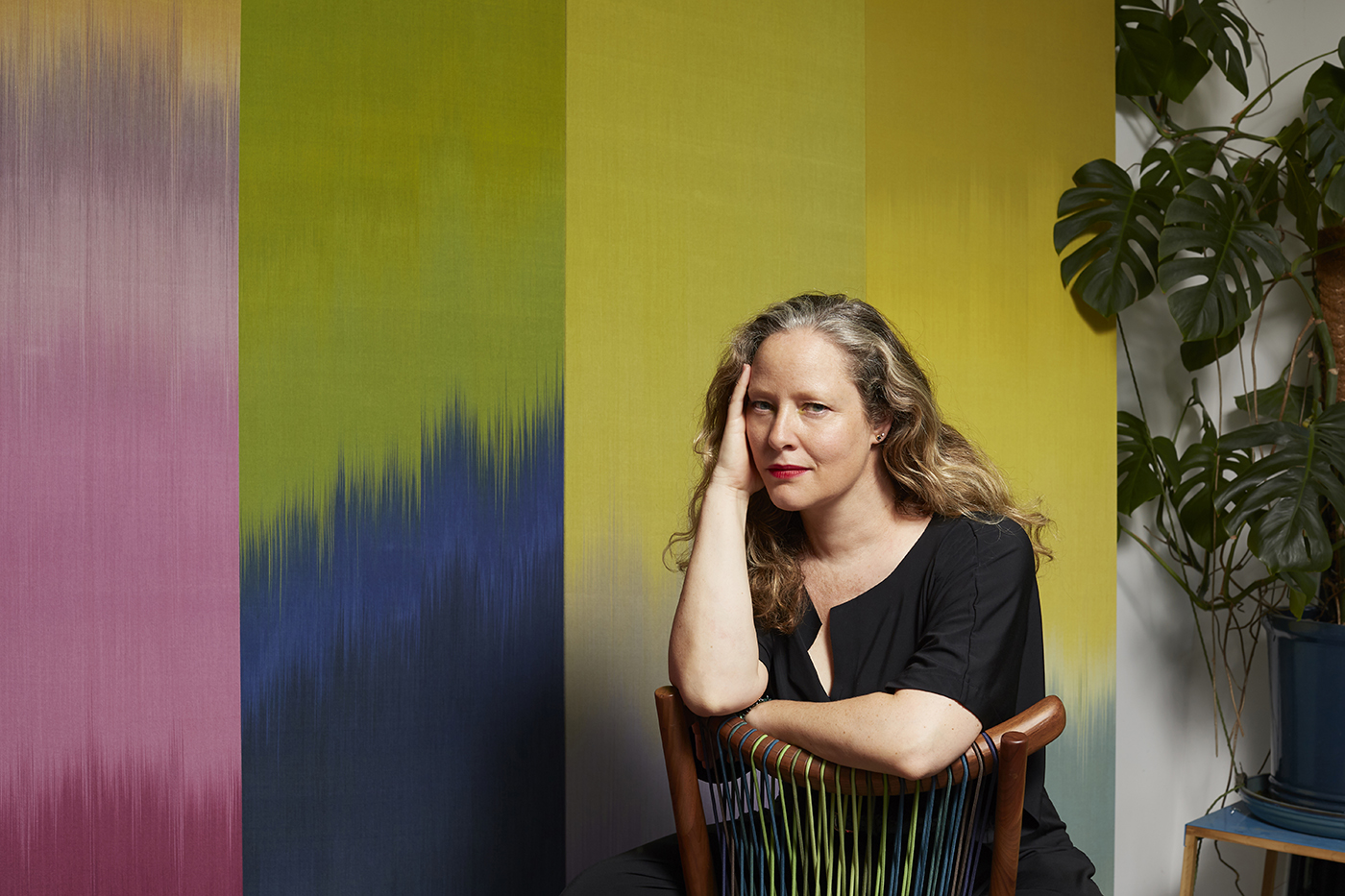



Add Comment